This Philips air purifier has made my home cleaner than ever – it's smart, stylish and a solid all-rounder
It's very energy-efficient, too
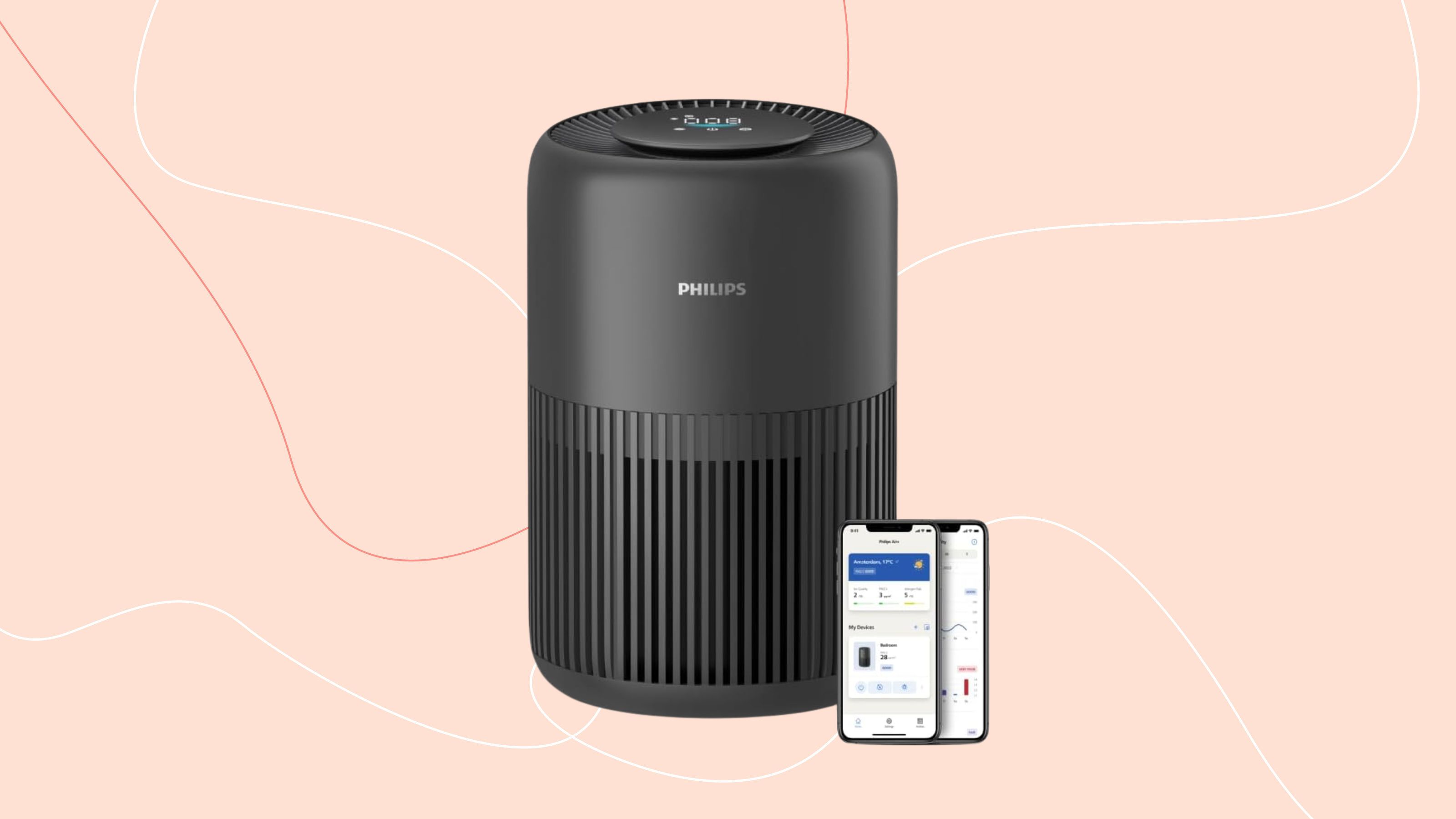
The Philips PureProtect Mini 900 Series Smart Air Purifier is a great all-rounder, balancing effective purification with quiet operation and thoughtful design. It’s energy-efficient, easy to use, and ideal for everyday use. While it takes a little longer to stabilise after filtering VOCs, it performs consistently well overall – a smart, low-fuss choice for cleaner air at home.
-
+
Quiet and efficient
-
+
Responds quickly to smoke and cooking fumes
-
+
Low-maintenance thanks to the 12 month filter life
-
-
Could be more compact in size
-
-
Takes time to stabilise on 'good' after filtering VOCs
Why you can trust Ideal Home

Philips is a trusted name when it comes to home tech, and its air purifiers are no exception. The brand’s PureProtect 900 Series promises powerful purification in a sleek, compact design – and with its smart connectivity and quiet operation, it has a lot to boast about. But does it deserve to be called one of the best air purifiers on the market?
After testing it for two weeks, I’ve found plenty to like about this model. Here’s my full review.
In a nutshell
The Philips PureProtect Mini 900 Series Smart Air Purifier is a sleek, easy-to-use air purifier that will fit neatly into most homes. It’s simple to set up, runs quietly, and connects seamlessly to the Air+ app for smart control and real-time air quality updates.
During testing, it reacted quickly to smoke and cooking fumes, and while it took longer to stabilise after tackling VOCs from aerosol deodorant, it still cleaned the air effectively every time. It also managed to register dust levels – something not all air purifiers manage to do.

Thanks to the auto mode, there's no guesswork needed for what setting to put the fan on, and with a low running cost of less than 1p per hour, you can leave it on all day without fear of your energy bills rocketing. It could be more compact in design, but its sleek aesthetic means it still looks good on display.
All in all, I'd say it's a reliable, stylish option for anyone who wants cleaner air without constant maintenance or noise.
Specifications
- Recommended room size: up to 65m²
- CADR: 250 m³/h
- Noise levels: 20.5dB
- Filter type: HEPA NanoProtect filter
- Dimensions: 23.8D x 24.0W x 36.4H cm
- Weight: 2.5kg
- Wattage: 23W
- Smart app connectivity: Yes
- Timer: No
- Auto mode: Yes
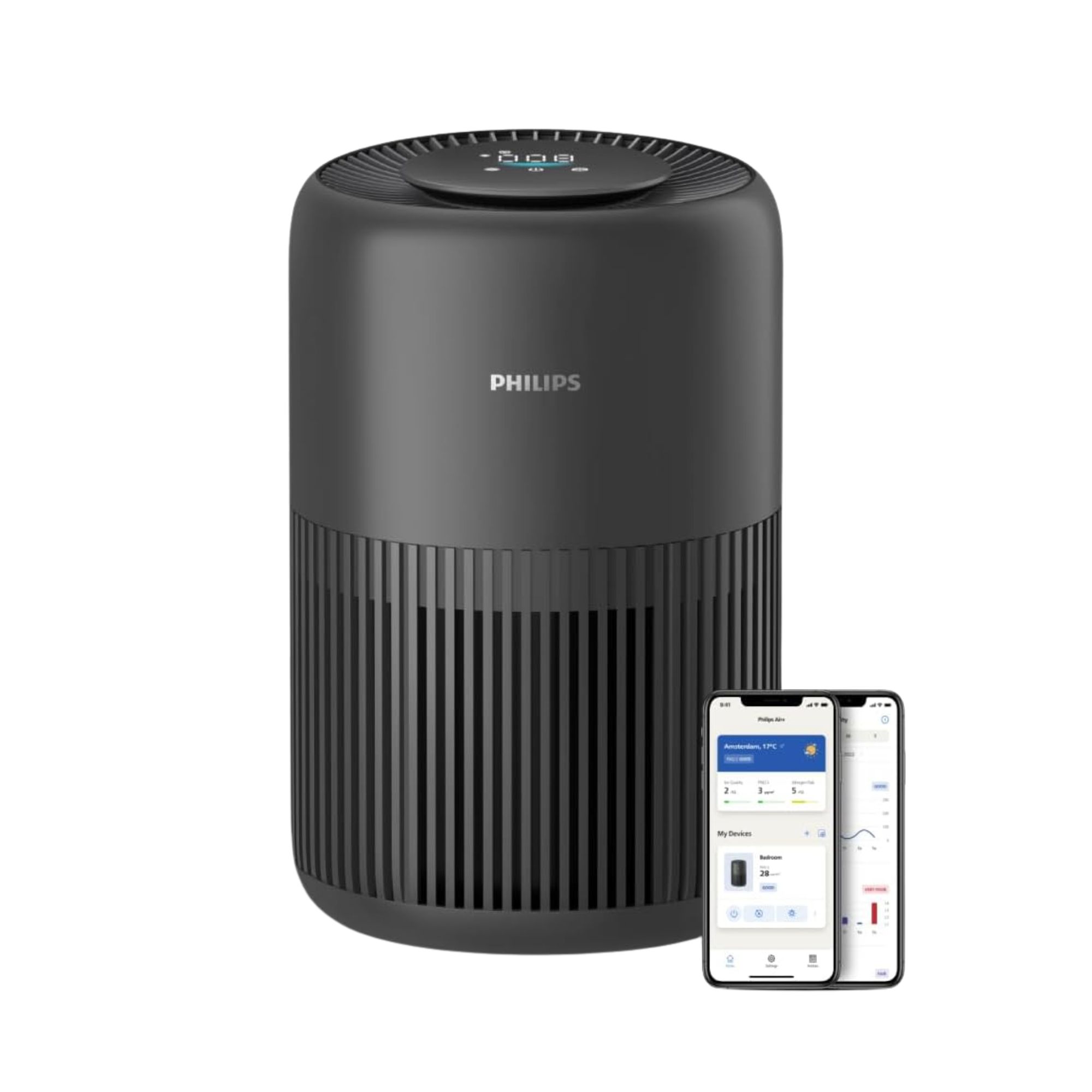
How I tested

The Philips Pure Protect 900 Series was tested by Katie, a writer and reviewer who lives in a flat in Leeds with her partner.
During her two-week testing period, Katie put this air purifier through Ideal Home's dedicated air purifying testing process, assessing its responses to controlled tests, as well as using it every day to improve the air quality in her home.
Unboxing and setting up
The Philips PureProtect 900 Air Purifier arrived in a lightweight box that was easy to carry and clearly labelled with a picture of the appliance on the front.
Sign up to our newsletter for style inspiration, real homes, project and garden advice and shopping know-how
I was a little disappointed to see that the purifier and its filter were both wrapped in single-use plastic. Given that this is an appliance designed to promote cleaner, healthier living, it would have been nice to see more eco-friendly packaging, which, from previous testing experience, I know can work.
Accessing the filter was very straightforward, however. The bottom of the device twists off easily, allowing the filter to be removed and unwrapped before being slotted back into place. Once that was done, all I needed to do was insert the power cable, plug it in, and it was ready to go.

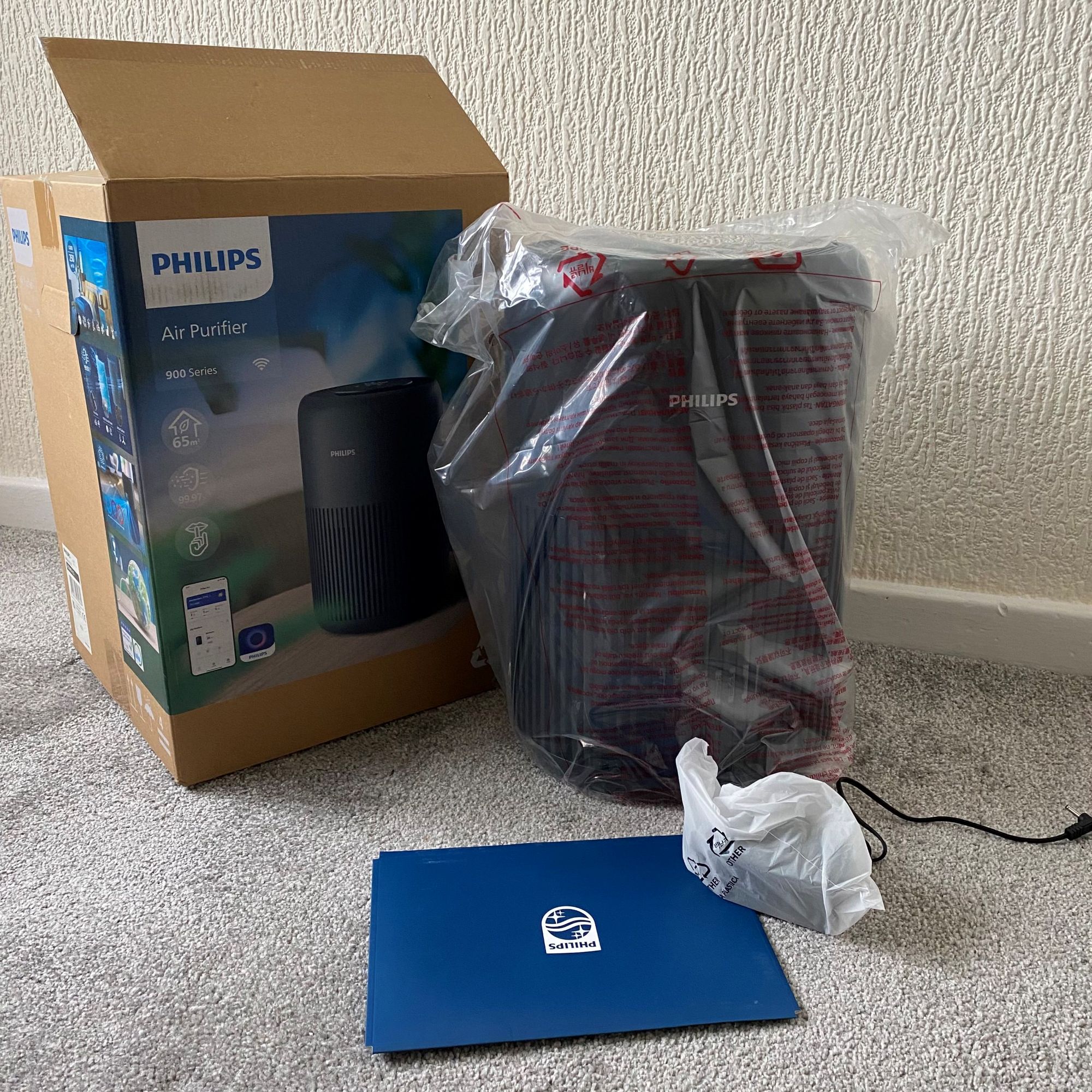
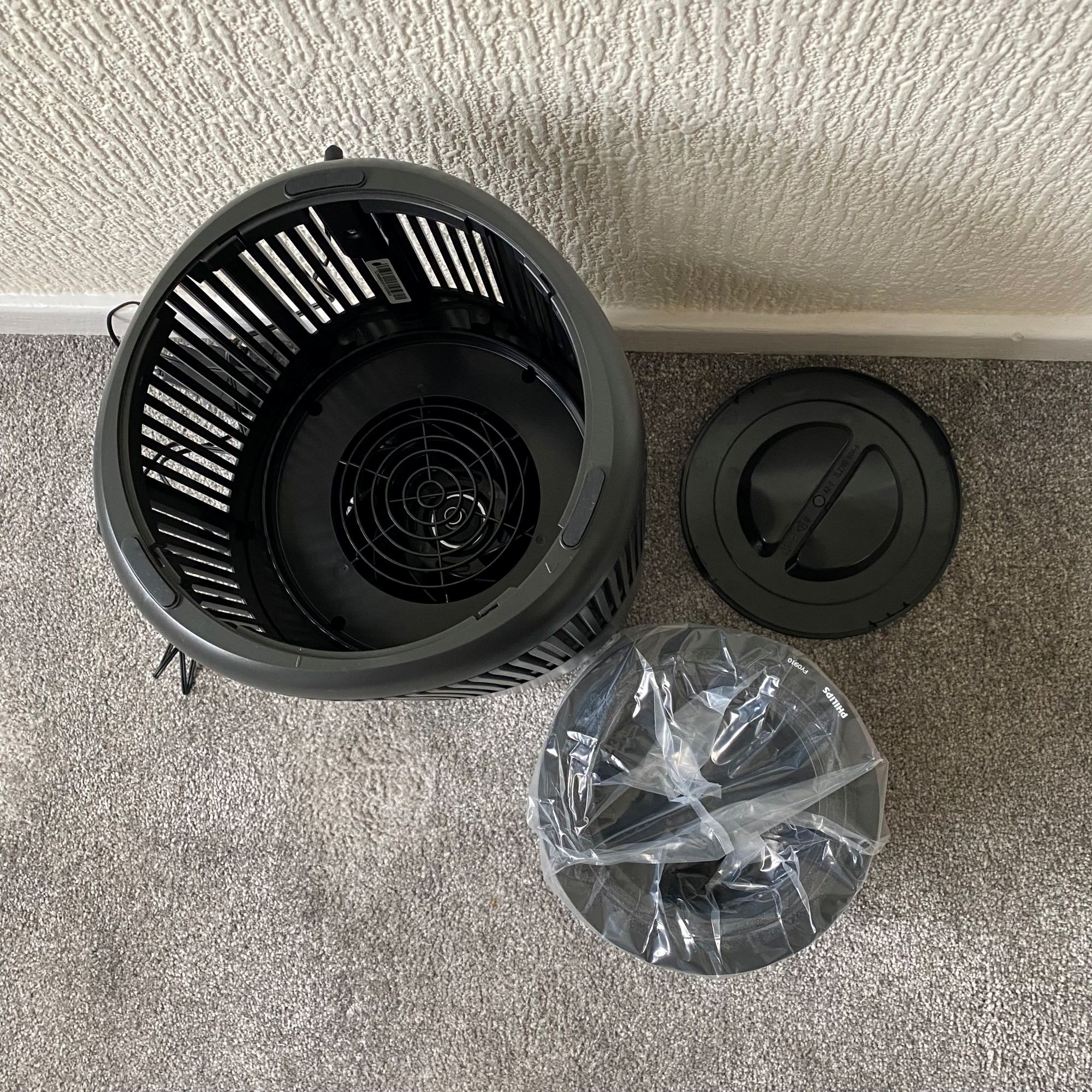
The setup process is outlined clearly in the user manual. I usually prefer written instructions alongside pictures, but the illustrated guide was (thankfully) clear enough to follow. There’s also a QR code included that directs you to the Philips website and encourages you to download the Air+ app for full functionality.
After downloading the app, I paired the purifier with my phone, which was a seamless process. The device connected quickly, but there is guidance outlined in the app if you're struggling. I'm by no means a tech-whizz, so any smart devices that are easy to set up always get a big green tick from me.
You don't have to use the smart features if you don't want to, but for the best experience, I do recommend using the app. You'll get a good visual on your home's air quality in real time, and be able to switch it on and off when you're not at home – all while keeping an eye on your device's health, too.
Design
When it comes to design, I think it’s important that an air purifier looks good enough to keep out on display – after all, there’s little point in investing in something that purifies your air if it ends up being too much of an eyesore to use.
I tested the sleek black version of the Philips PureProtect 900 Series, which I think would fit right in with most modern interiors.
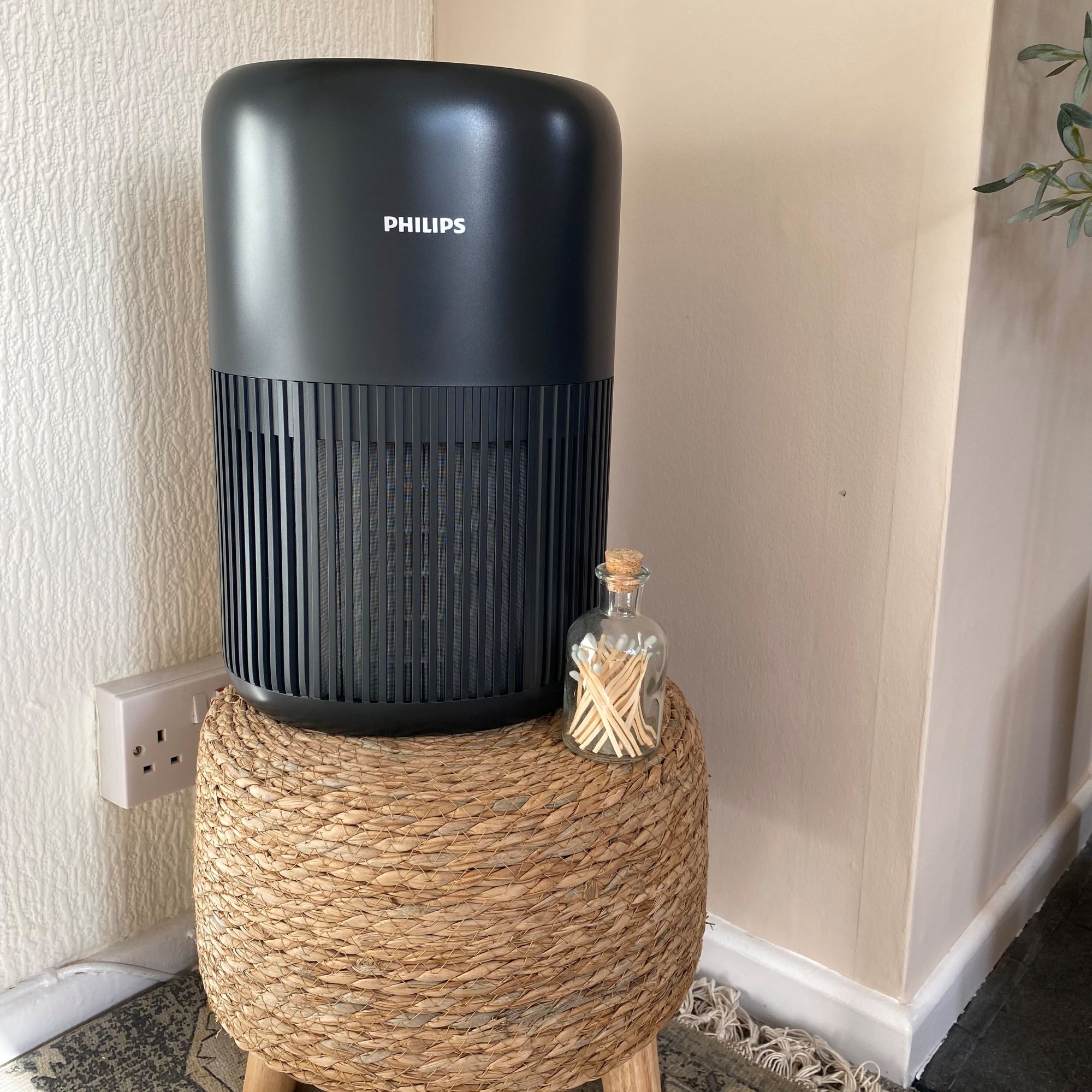
There’s also a softer ‘silk beige’ colour that would blend nicely into warmer-toned spaces, and a classic white option if you prefer cleaner-looking appliances.
At 36cm tall, it’s definitely larger than some other air purifiers I’ve tested, such as the Blueair Blue Pure Mini Max, but it doesn’t feel bulky or intrusive. It’s got a smooth, rounded design and will sit comfortably in most rooms. I kept mine in the living room throughout the testing process, and I never felt like it made the space look messy.
Performance
When it comes to reviewing an air purifier's performance, we perform a series of tests (covering smoke, VOCs, bacon, and dust) to see how the device handles real-life conditions. Firstly, we measure how long it takes an air purifier to register a dip in air quality, and secondly, how long it takes to return the air quality to normal.
The Philips PureProtect 900 Series makes it easy to monitor your home’s air quality in real time, thanks to its clear digital display on the top of the unit. This shows the PM2.5 reading – which tracks fine particles like dust, smoke, and pollen – alongside a coloured LED indicator that gives you an instant snapshot of how clean your air is.
A blue indicator light reflects 'good' air quality, and at the other end of the scale, red reflects 'very poor' air quality. The light moves through purple and pink before getting to red, as outlined in the user manual. You can keep an eye on these readings through the Air+ app, where you'll also be able to see a written description of the air quality as well.

First up, I performed the standard smoke test by lighting a match a safe distance from the purifier and blowing it out. The Philips air purifier reacted quickly, taking around 15 seconds to register the drop in air quality. I watched the LED change from blue to purple and through to red just a few seconds later.
I was impressed by how quickly it recovered, too. Within a minute, the indicator had already shifted back from red to purple, and then to blue again shortly after. The air quality briefly dipped to purple again before stabilising on blue, but overall, it was a speedy result that suggests this model is more than capable of reacting to sudden changes in air quality.
It was also a far quicker reaction time than the last air purifier I tested (the Blueair Blue Pure 511i Max), which took over 13 minutes to remove all traces of smoke from the air. Needless to say, I was impressed with the sensor's responsiveness and the fan power's efficiency following this test.
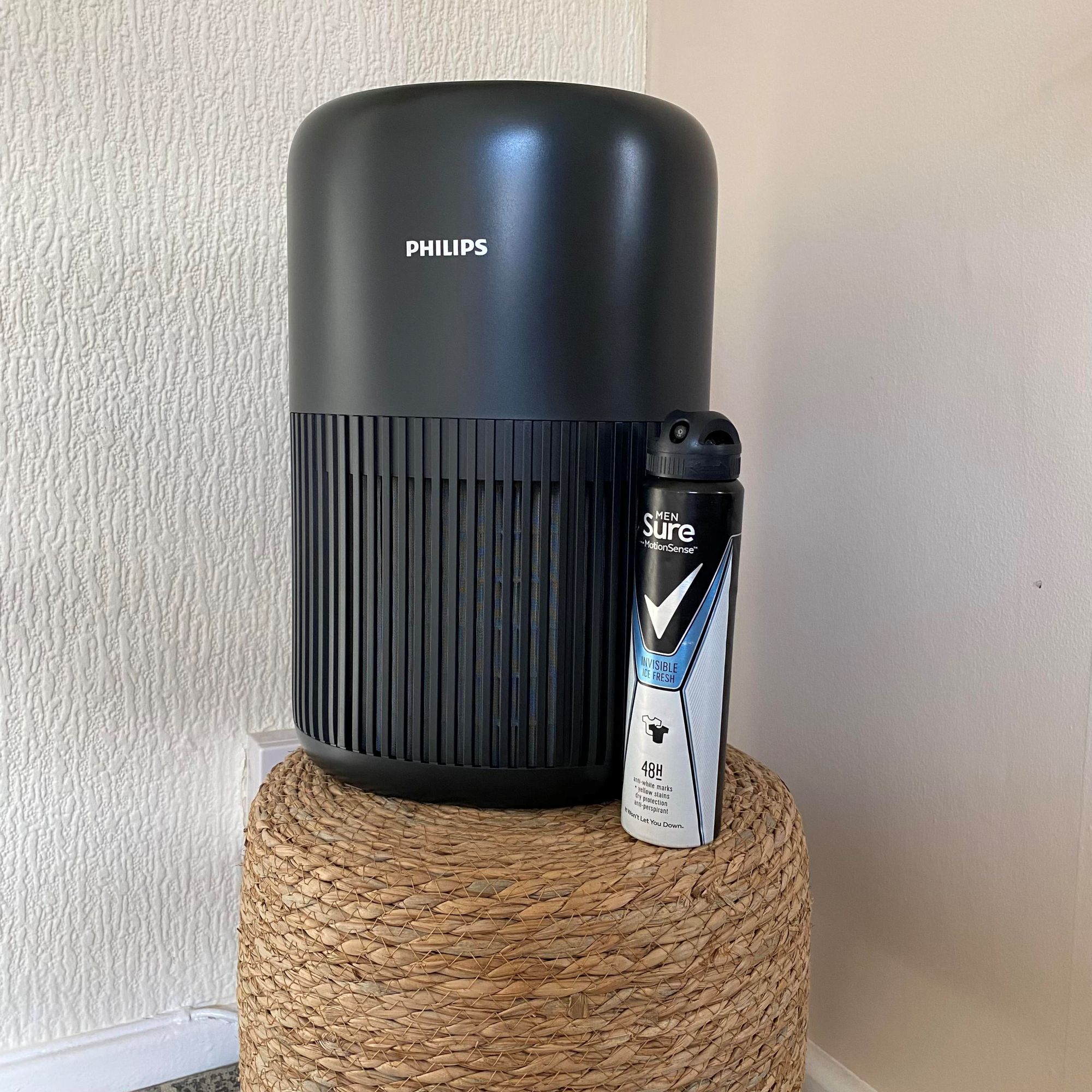
Next up, the deodorant test. Most aerosol deodorants contain VOCs (volatile organic compounds), which, from a health perspective, we want to limit our exposure to as much as possible.
After spraying a few bursts of deodorant near the device, it took 27 seconds for the indicator to change from blue to purple, and another 11 seconds to move into red. It stayed in this range for quite a while, taking just over half an hour to move back to purple, and a further half hour to return to blue.
Even then, the air quality continued to fluctuate between blue and purple for another 20 minutes before it finally settled. This was definitely the longest recovery time of all the tests, though I’ve found this fairly common in previous air purifier reviews – VOCs tend to linger longer than smoke or cooking fumes.

For the bacon test (my personal favourite), the Philips 900 reacted pretty quickly. Within 40 seconds of the bacon sizzling away in the pan, the air purifier's indicator dropped from blue to purple, and another 45 seconds later it reached pink – one level above red.
Interestingly, it never dipped into the red zone at all, showing that the purifier doesn't deem cooking fumes to be as ' polluting' as smoke and VOCs. It's really the device's odour-removing capabilities I'm testing here; the quicker the purifier returns the air quality to 'good', the sooner my kitchen returns to smelling neutral.
It took just 1 minute and 45 seconds for the colour indicator to move back down to purple, and after 8 minutes it returned to blue. A couple more minutes passed before the reading stabilised completely, but overall, it handled cooking fumes well without lingering odours.
For everyday use, this is the kind of responsiveness you want – quick enough to catch odours before they spread, but not so overactive that it ramps up unnecessarily. I also appreciated how neutral the kitchen smelled shortly after cooking, which is exactly what you’d hope for from a purifier of this size.
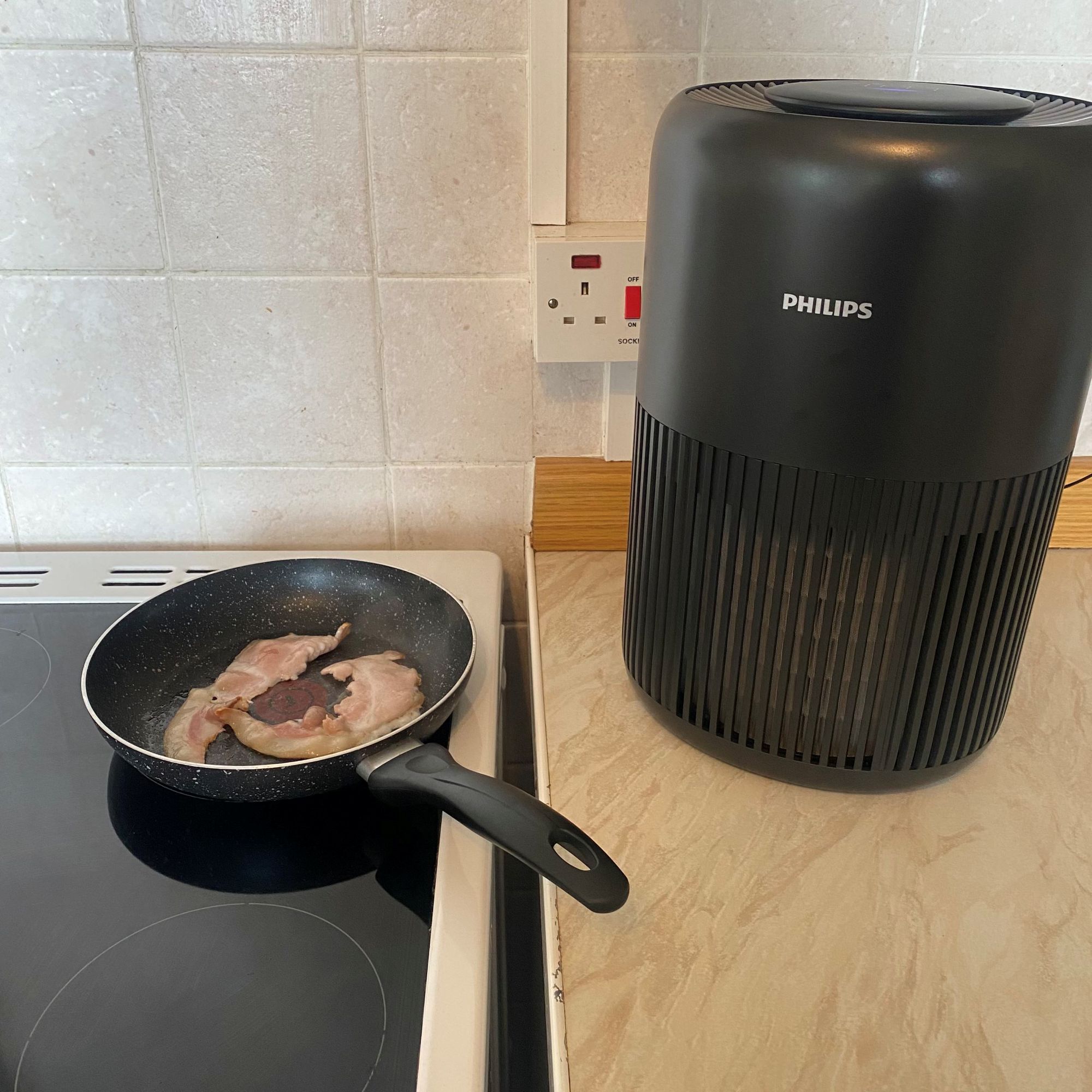
Finally, for the dust test, I emptied my vacuum cleaner near the purifier to see how it responded. At first, nothing happened, despite there being a lot of dust sitting right by the device. But after 1 minute and 20 seconds, the purifiers' HEPA NanoProtect filter kicked in, and the light switched from blue to purple. It wavered between the two colours for a short while before stabilising, and just 1 minute and 30 seconds later, it had returned to blue.
Some air purifiers don’t react to dust at all, so it was good to see that the Philips sensor did eventually register it. The slightly delayed response suggests that it’s better at detecting airborne particles once they’ve dispersed, rather than larger clumps sitting close to the base of the unit.
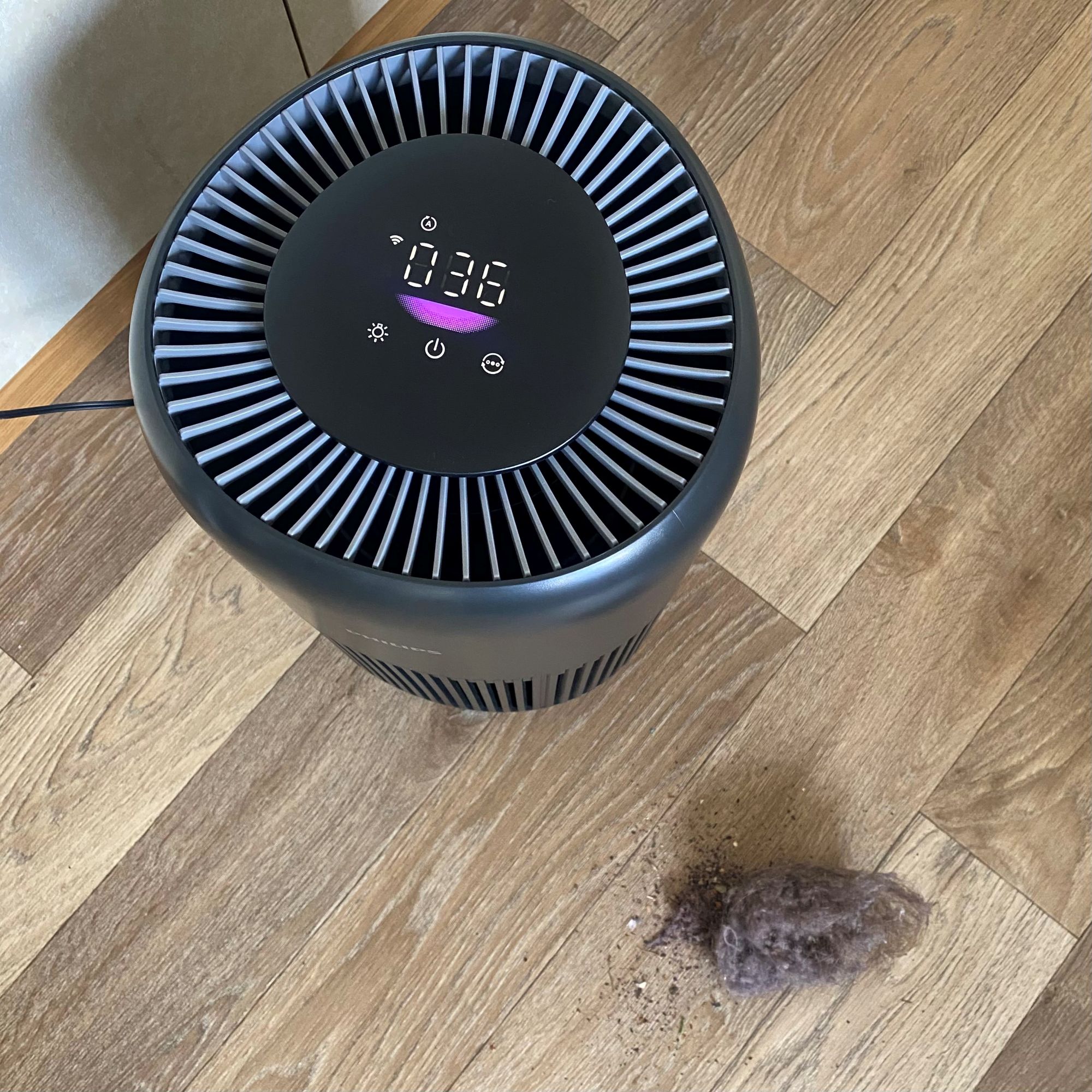
There was a consistent pattern that emerged across all four tests – the air purifier was effective at removing pollutants, but it struggled to maintain a stable “good” reading on the PM2.5 scale after initially reaching it.
This isn’t necessarily a performance flaw, as the air quality itself was clearly improving, but it does suggest that the sensor is quite sensitive and takes a little while to recalibrate after a spike. For most users, this won’t be a major issue – but if you like to see instant, steady readings, it’s something to be aware of.
Ease of use
The Philips PureProtect 900 Series Air Purifier is refreshingly straightforward to use. The touch-sensitive buttons on the display panel let you power the device on and off, switch between the two higher fan settings, and activate night mode with a simple tap.
In practice, though, I rarely needed to adjust the fan speed manually. Auto mode does an excellent job of monitoring and responding to changes in air quality, so there’s no guesswork involved in deciding which setting to use.
Between the intuitive onboard controls and the option to manage everything through the Air+ app, Philips has made sure that operating this purifier is easy to live with.
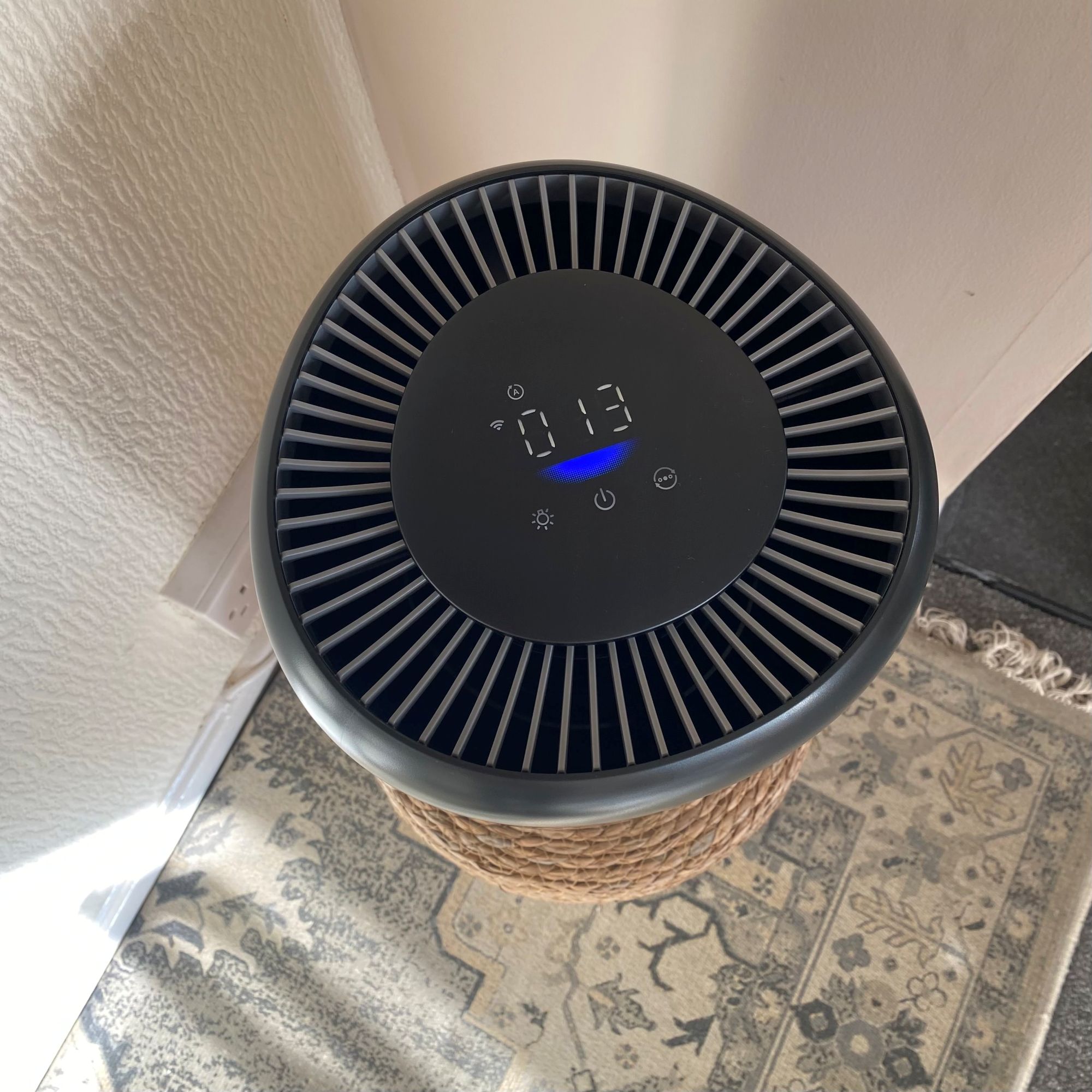
Noise levels
The Philips PureProtect 900 Series is impressively quiet in day-to-day use. When the air quality is good, it runs so softly that you can barely hear it even when standing right next to the device.
On the medium and high fan settings, it naturally gets louder. I measured around 47dB on medium and 60dB on high.
That's fairly noisy, but the purifier rarely needs to be on these settings for long. When I wasn't performing the standard air purifier tests, the air quality in my home was mostly good, meaning the device could run quietly on its lowest setting. I can comfortably leave it in auto mode while watching TV or working without it becoming a distraction.
Portability
The Philips PureProtect 900 Series doesn’t have a dedicated carry handle, so you’ll need to lift it by the main body when moving it around. Thankfully, it’s easy to grip and feels sturdy enough that you don’t have to worry if you accidentally drop it.
At just 2.5kg, it’s pleasantly lightweight, so carrying it between rooms isn’t a problem at all. I can easily move it from the living room to the bedroom or kitchen without much effort.
If I’m being picky, I’d say I wouldn’t mind if it were slightly smaller – it’s not bulky by any means, but a more compact size would make it even easier to slot into tight spaces.
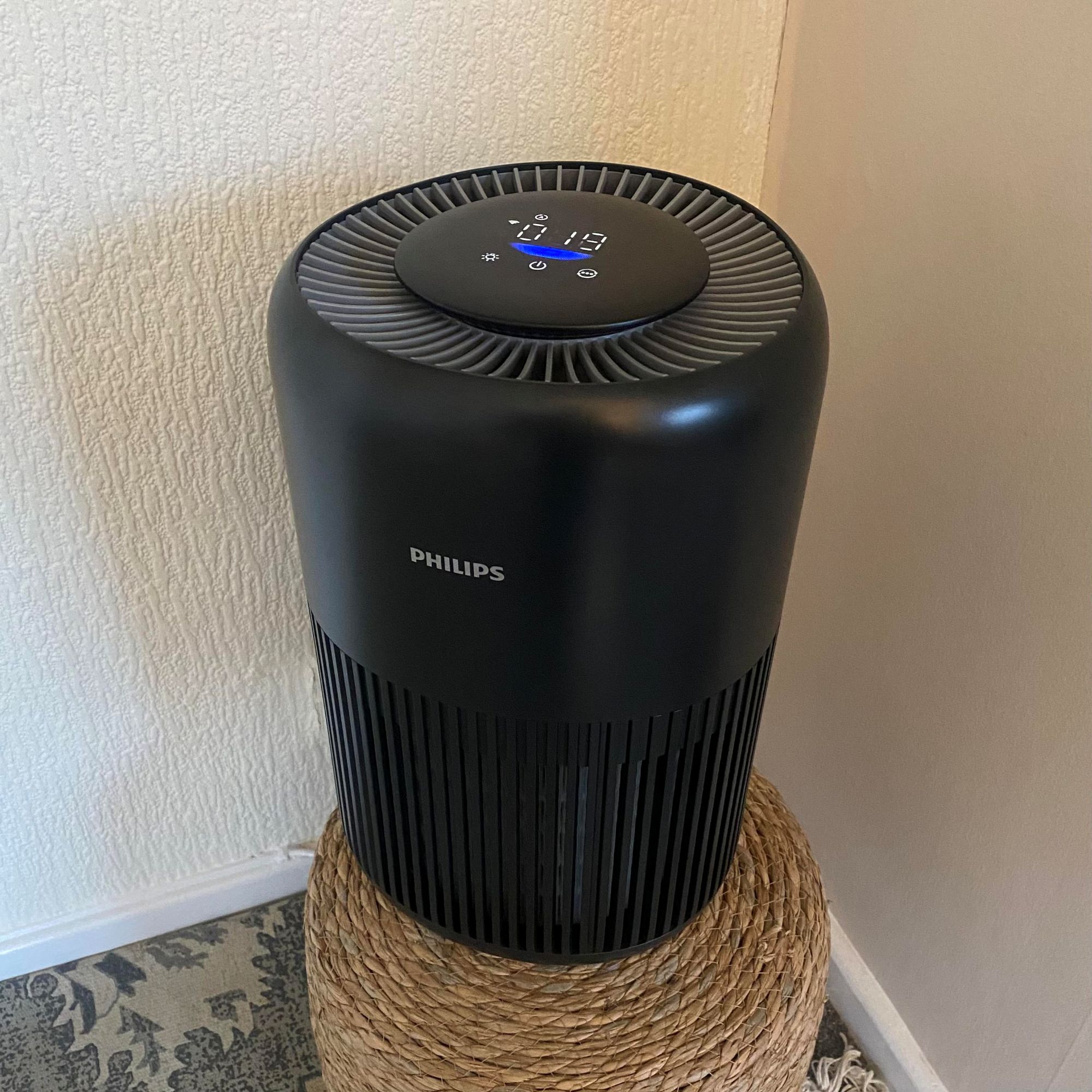
Energy use
Given the recent change to the Ofgem energy price cap, it's worth weighing up the cost of running an air purifier – no one wants a device that's going to make the energy bills rocket, after all.
Fortunately, the Phillips PureProtect 900 Series Air Purifier is incredibly cheap to run. Using only 23W of energy on the highest fan setting, it works out at around 0.6p per hour. Even if left on for long periods of time, it's inexpensive.
Plus, the purifier's auto mode means it rarely runs on the highest (and most power-hungry) setting for long, helping to keep energy use low without you having to think about it.
Filter replacement
To keep any air purifier working in tip-top condition, the filter will need to be replaced eventually. The longer a filter can be used for, the better – it means less faff and less money, because replacement filters always come at a cost.
Handily, the filter in the Phillips PureProtect 900 Series can be vacuumed, meaning you'll be able to extend its shelf life and get more use out of it. I'd recommend doing this at least once a month, possibly more if the air purifier's seeing heavy use every day.

If you keep the filter in good condition, it can last for up to 12 months before it needs to be replaced. You can buy a new filter from Amazon £34.99, though make sure to shop around, because there are some non-branded versions that are compatible with the PureProtect 900 Series as well.
What I do like about using the Air+ app is that there's no guesswork involved when it comes to filter replacement. You can see how "healthy" your device is and it will prompt you when the filter needs replacing.
Online ratings
At the time of writing, the Philips PureProtect 900 Series holds a strong 4.5 out of 5 stars on Amazon, based on more than 2,200 reviews – a clear sign that it’s gone down well with users.
People have commented on the noticeable difference in air cleanliness after using the purifier, with several saying their rooms feel fresher and less dusty. Most are also happy with the £149 price point, noting that it strikes a fair balance between quality and performance – though a few feel it’s slightly expensive compared to more budget-friendly options.
The most common critique relates to its size. While most users appreciate the sleek design, a handful mentioned they’d prefer it to be a little smaller to better fit into tighter spaces. Overall, though, the feedback is definitely positive.
Verdict: Should you buy the Philips PureProtect Mini 900 Series Smart Air Purifier?
The Philips PureProtect 900 Series is a great all-around air purifier that combines solid performance with a sleek, user-friendly design. Throughout testing, I was impressed with how efficiently it cleaned the air in my home – whether it was tackling smoke, cooking fumes, or everyday dust. It reacted quickly, recovered well, and I felt confident leaving it on auto mode to quietly get on with the job.
It’s also incredibly easy to use, with intuitive touch controls on the top panel and the option to manage everything through the Air+ app. The purifier runs quietly most of the time, making it ideal for bedrooms or living spaces, and the long-lasting filter means there’s no steep ongoing cost to keep it running.
While there are cheaper air purifiers on the market, they might not match the Philips 900’s combination of performance, smart design, and simplicity. It’s stylish enough to leave out on display – which matters if you want to make the most of it – and reliable enough to keep the air in your home feeling clean.

Katie has been writing freelance since early 2022, specialising in all things homes and gardens, following achieving a Masters in Media and Journalism. She started out writing e-commerce content for several of Future’s interior titles, including Real Homes, Gardeningetc, Livingetc, and Homes and Gardens. Since then she’s been a regular contributor on Ideal Home’s digital team, covering news topics, how-to guides, and product reviews.